Abstract
Background: Lymphoma is an important and potentially curable oncological disease in South Africa. The staging and restaging of lymphoma have evolved over the years, with the latest international consensus guideline being the Lugano classification (LC). Prior to routine implementation of the LC, its robustness in the local setting should be determined.
Objectives: To determine the Inter-observer variability in response assignment when applying the LC in patients with lymphoma who were staged and restaged with computed tomography. In case of excessive discordance, specific mitigating measures will have to be taken before and during any proposed implementation of the LC.
Method: A total of 61 computed tomography scans in 21 patients were evaluated independently by four reviewers according to the LC, of which 21 scans were done at baseline, 21 at initial restaging and 19 at follow-up restaging. A retrospective comparative analysis was performed. Kappa values were calculated to determine agreement between observers.
Results: Only a moderate inter-observer agreement of 52% in the overall response classification was demonstrated. The most important sources of discrepancy were inconsistency in the assessment of target lesion regression to normal, determining the percentage change in the summed cross-sectional area of the target lesions and ascribing new lesions as either due to lymphoma or other causes.
Conclusion: Implementing the Lugano classification when restaging lymphoma is desirable to improve consistency and to conform to international guidelines. However, our study shows substantial inter-observer variability in response classification, potentially altering the treatment plan. Dedicated training and continuous quality control should, therefore, accompany the process.
Introduction
South Africa has a high burden of cancer, of which lymphoma is an important and potentially curable condition.1 The oncological staging and restaging of patients with lymphoma have undergone several changes over the years, with the latest international consensus guideline being the Lugano classification (LC).2,3
The Lugano classification (LC) (Figures 1 and 2) was conceived as an unambiguous and universally applicable lymphoma staging system, suitable for both clinical practice and trials, to enable multicentre investigative studies and facilitate the evaluation of new therapies by healthcare authorities.4 Internationally, combined positron emission tomography and computed tomography (PET-CT) is considered to be the principal imaging method for staging and restaging of lymphoma, although stand-alone CT is regarded as an acceptable alternative when PET-CT is unavailable.5,6
 |
FIGURE 1: Applying the Lugano classification with computed tomography. |
|
 |
FIGURE 2: Response to treatment according to the Lugano classification. |
|
However, the South African circumstances, in general, and those of the Free State province, in particular, differ significantly from the developed world.7,8,9 For instance, PET-CT is unavailable in government hospitals in the Free State and four other South African provinces, at least in part because of limited financial resources. The situation is complicated further by the large rural population, which hampers regular follow-ups at centralised treatment centres and the advanced nature of the lymphoma at presentation, often with concomitant human immunodeficiency virus (HIV) and opportunistic infections, such as tuberculosis (TB).10
Size measurement is a fundamental part of CT interpretation in both oncologic and non-oncologic settings.11 CT measurements are used as imaging biomarkers or surrogate endpoints for assessing treatment response when applying the LC with lymphoma. Patients are then assigned to one of the following categories, predominantly based on the measurements obtained with CT: complete response (CR), partial response (PR), stable disease (SD) or progressive disease (PD).12,13
Possible sources of error during CT analysis in lymphoma include intra- and inter-observer variability and inconsistent application of measurement criteria, which may lead to discordance in the evaluation of the tumour response.14,15,16 Furthermore, Ford et al.17 described a number of errors that can lead to misclassification of the treatment response: firstly, human error, where lesions are missed during evaluation, incorrectly measured or inappropriately regarded as target lesions; secondly, data errors, where all the available imaging and clinical information were not considered; thirdly, application errors, where the response criteria were inconsistently applied; and fourthly, conclusion errors, where the reader makes an incorrect assessment of the otherwise valid data.
To the best of our knowledge, there is no published research that specifically addresses inter-observer variability when applying the LC to CT-scans performed in patients with lymphoma. Studies in a similar manner either used different CT criteria (International Harmonization Project [IHP]), a different imaging modality (PET-CT), or assessed the CT response criteria utilised for solid tumours (response evaluation criteria in solid tumours [RECIST]).18,19,20
The inconsistent assignment of response categories among different reviewers has obvious negative implications for patient management. Assigning an erroneous response category will lead to either overtreatment or undertreatment, with its associated risks.17 The objective of this study was to determine the inter-observer reproducibility of the response to treatment assessment according to the LC when using CT in patients with lymphoma. This would demonstrate whether the LC is robust enough to be introduced directly into routine clinical practice in the South African public sector setting or whether additional measures, such as dedicated training and continuous quality control, would be necessary.
Research methods and design
Setting
Locally (Bloemfontein), Universitas hospital and its annexes serve as the oncology referral centre for central South Africa and Lesotho. Standard practice with lymphoma is to perform a baseline CT-scan prior to the initiation of therapy. Generally speaking, an initial restaging scan is performed after two to four cycles of chemotherapy with follow-up restaging scans performed after four to six cycles and at the completion of treatment. The result of the CT-scan is integrated with that of the bone marrow biopsy and clinical findings by the oncologist. Patients who do not at least have a PR to therapy after four cycles of chemotherapy are considered for second-line chemotherapy. Patients with radiological evidence of residual disease at the completion of treatment or interim PD may need histological confirmation, followed by consideration of salvage chemotherapy and/or radiotherapy.
Patients and materials
Adult patients with newly diagnosed lymphomas, who presented for their baseline and restaging CT-scans at Universitas Academic Hospital Complex between January and November 2017, were considered for inclusion in the study. A total of 21 patients met the aforementioned criteria and were included in the study. A total of 61 CT-scans were performed in these patients: 21 scans were done at baseline, 21 scans at initial restaging and a further 19 scans at subsequent follow-up restaging. Nine patients had one follow-up restaging scan, while five patients had two follow-up restaging scans.
Most (54) of the scans were performed with General Electric’s six-slice scanner; the other seven scans were performed with General Electric’s 64-slice scanner. With the six-slice scanner, scans were acquired from the skull vertex to the pubic symphysis. Multiplanar reconstructions of the neck were performed at 1.25 mm slice thickness and for the rest of the body at 2.5 mm. With the 64-slice scanner, the base of the skull to the symphysis was included, and 1.25 mm slice thickness multiplanar reconstructions were performed of the whole body.
Design, procedure and analysis
A retrospective, comparative analysis was performed. Four reviewers reviewed all the scans of every patient independently. Three of the reviewers were registrars, with three to five years of experience in interpreting body CT, while one reviewer was a specialist with more than 10 years of experience. The reviewers were provided with the clinical information that is routinely available in normal practice such as the histological results, HIV-status, concurrent or previous conditions of relevance (e.g. TB) and the findings of the clinical evaluation.
The reviewers were then requested to complete data sheets for the baseline and restaging CT-scans according to the LC, which is elucidated in Figure 1. At baseline, the initial step was to identify and measure the target lesions and determine the sum of the product of the diameters (SPD). Each reviewer selected their own target lesions. The next step was to measure the craniocaudal length of the spleen on the coronal view, from its dome to its inferior tip (Figure 3). The final step was to identify and describe non-target disease, if any.
 |
FIGURE 3: Splenomegaly with the spleen measuring > 13 cm in the craniocaudal dimension. Note the splenic lesion due to lymphoma (arrow). |
|
With the restaging CT-scans, the reviewers had to analyse the restaging scan and compare it with the previous scans. The previously identified target lesions were remeasured, and the new SPD and the percentage change from the baseline scan were calculated. The spleen was remeasured and compared to the previous results. With the change in the SPD and splenic dimension, the analysed variable was binary in nature, that is, ≥ 50% or < 50% for the SPD or ≤ or > 13 cm for the spleen. Next, previously identified non-target disease was reassessed as worse, stable or smaller, or resolved. If any new lesions attributable to lymphoma were detected, it was described as such. In case of progression, the product of the diameters of a single lesion was calculated, and the change from the nadir determined.
Finally, a response was assigned according to the LC (Figure 2), as CR, PR, SD or PD (Figures 4 and 5). Results were summarised by frequencies and percentages, with 95% confidence intervals for main outcomes. Kappa values were calculated to determine agreement between pairs of observers for the initial and follow-up restaging response classification.
 |
FIGURE 4: Progressive disease in Hodgkin’s lymphoma, initial computed tomography (CT) (a) and restaging CT (b). |
|
 |
FIGURE 5: Hodgkin’s lymphoma, with the initial computed tomography (CT) (a) and restaging CT (b) Complete response to therapy with the axillary nodes regressing to normal size. |
|
Ethical considerations
Ethical approval for the study was obtained from the Health Sciences Research Ethics Committee Administration (UFS-HSD 2017/1118) and Free State Department of Health (FS_201710_009). No patient consent was necessary as the study was a retrospective analysis of data with no alteration in medical management. Patient data could only be accessed by authorised medical personnel and were kept confidential at all times. Patient data were anonymised prior to data interpretation.
Results
Patient age, lymphoma histology and treatment regimens are shown in Table 1. Ages ranged from 18–91 years, with a median of 38 years. Hodgkin’s lymphoma (nine cases) and diffuse large B-cell lymphoma (five cases) were the most common histological type. Adriamycin, bleomycin, vinblastine and dacarbazine (ABVD) and infusional cyclophosphamide, doxorubicin and etoposide (CDE) were the most common and second most common chemotherapy regimens respectively. Out of 21 patients, 14 were living with HIV.
| TABLE 1: Patient histology, chemotherapy regimen and age. |
The frequency of inter-observer agreement was determined for each step in the process as previously set out (Figure 1) with the calculated percentages shown in Table 2. The κ-values for the initial restaging response assessment between pairs of observers ranged from 0.39–0.72 (moderate agreement); the follow-up restaging scans were analysed as a group with κ-values of 0.61–0.93 (moderate to strong agreement) between pairs of observers.
| TABLE 2: Inter-observer agreement with staging and restaging. |
Finally, the overall concordance with regard to the combined initial and follow-up restaging response assessment was determined. Complete agreement during the whole cycle was seen in 11 out of 21 patients (52%; 95% confidence interval: 30% – 74%). The reasons for discordance in the remainder of the patients are summarised in Table 3. A significant change in management was possible in 8 out of 10 patients where dissent in the response assessment was demonstrated.
| TABLE 3: Reasons for discordance with response assessment. |
Discussion
The relatively high incidence (almost 20% of the total) of the otherwise rare plasmablastic lymphoma (Figure 6) in this study can be ascribed to the presence of HIV and oncogenic virus infection, such as Epstein–Barr and Kaposi sarcoma herpes virus, as discussed by Cesarman.21 Non-Hodgkin’s lymphomas are considered as an acquired immune deficiency syndrome (AIDS)-defining condition and related to persistent antigenic stimulation, immune suppression and genetic disruptions. Hodgkin’s lymphoma also has a higher incidence in patients with AIDS.
 |
FIGURE 6: Plasmablastic lymphoma presenting as a maxillary mass. Initial computed tomography (CT) (a) and restaging CT (b), demonstrating a partial response. |
|
The high incidence of HIV (67%) corresponds with previously published data in the South African context, where de Witt et al.22 found that 80% of diffuse large B-cell lymphomas were HIV related. The presence of HIV-related lymphoma at a younger age and in advanced stages tends to be more aggressive and has a poorer prognosis overall. There are also other issues which complicate treatment, such as the higher prevalence of opportunistic infections and organ dysfunction for example bone marrow suppression and renal impairment. Simultaneous treatment with retroviral therapy when administering chemotherapy improves the response of the lymphoma.9,21,23
It is important to note that lymph node enlargement or splenomegaly does not necessarily equate to active lymphoma, especially in patients living with AIDS. HIV-associated lymphadenopathy in patients with active viral replication may be metabolically active with PET-CT, as will lymphoma.5 Assigning lung infiltrates, consolidation or nodules as either due to infection or lymphoma is particularly problematic in the local patient population, given the high burden of HIV and TB.
The most common reason (in 4 out of 10 patients) for response assessment discordance was an inter-observer difference in evaluation of target lesion regression to normal. This occurred most frequently with bony lesions with a soft tissue component where it was difficult to measure the soft tissue component reproducibly (Figure 7). It was also seen with irregular and ill-defined lymph node masses and with lymph nodes where the long-axis was not orientated parallel to the axial plane.
 |
FIGURE 7: Restaging CT (a) Initial computed tomography (CT) (b) Right iliac skeletal lesion with a soft tissue component (arrow) where the soft tissue lesion proved difficult to measure reproducibly, resulting in significant inter-observer variability. |
|
Other common sources of discrepancy were defining the decrease in the SPD as either3 ≥ 50% or < 50% and categorising new lesions as due to lymphoma or other causes (two and two patients, respectively, one with both). The former mainly occurred as a result of variability in the initial choice of target lesions. The latter was seen with lung lesions, where some reviewers regarded it as evidence of new or progressive lymphoma and others ascribed it to infectious or non-lymphoma-related causes. Reassessment of spleen size and non-target disease led to variance in response classification in two patients. There are definite limitations to the assessment of tumour involvement when using CT in lymphoma. A residual post-treatment mass can represent fibrosis instead of an active tumour. Lymphoma can also manifest without readily definable mass lesions, such as diffuse infiltration of the viscera or bone marrow.12
To the best of the authors’ knowledge, no published research specifically addresses inter-observer variability when applying the LC with CT in lymphoma. Therefore, we made a comparison with studies where observer variability was described with different response criteria, imaging modalities or as applied to cancers other than lymphoma. Obviously, response classification has to be precise and reproducible in order to guide clinical management and determine trial outcomes. Skougaard et al.16 assessed the inter-observer consistency (among 17 reviewers) of RECIST application with CT in a phase II trial in colon cancer and found that the overall response was differently classified in 17 out of 100 patients, although the change was potentially treatment altering in only six patients. Sources of discrepancy were the incorrect use of RECIST in the selection of target lesions, measurement of the tumour burden and identifying new lesions. The latter two discrepancies were also experienced in our study. The resultant variance in response classification was potentially treatment altering in 38% of our patients overall, which was higher than that experienced with the aforementioned study, where it was 6%.
Muenzel et al.18 studied intra- and inter-observer variability between four reviewers in the measurement of target lesions and its implication for response evaluation, specifically when applying the RECIST criteria with CT in 20 patients with various cancers. It was found that there was high variability in the sum of the measurements that potentially influenced the response classification, leading the researchers to suggest use of the mean results of all observers to improve consistency. Such an approach; however, would not be practical in the local setting, given the limited resources and personnel.
Interestingly, the aforementioned authors18 used proprietary software (Lesion Management Solutions) to facilitate computer-aided measurement of target lesions. Although the incorporation of computer-aided detection did not improve accuracy in their study, it led to significant timesaving, which should encourage radiologists to implement standardised restaging systems. Other investigators have shown that computer-aided volumetric tumour assessment is a promising technique in improving inter-observer variability, both with detection and diagnosis of lesions.24,25,26
Han et al.19 performed a retrospective review of 112 PET-CT-scans in 59 patients, using both the LC and the previous IHP criteria for response assessment in lymphoma, and found strong inter-observer agreement for initial restaging response assessment between the two readers (Cohen κ = 0.76) as applied to the IHP criteria but only moderate agreement with the LC (Cohen κ = 0.43). Most of the variability arose from an inconsistent interpretation of the residual fluorodeoxyglucose uptake. Moreover, our study revealed only moderate inter-observer agreement when using the LC, albeit with a different imaging modality.
Intra- and inter-observer variability of CT measurements in oncology was studied by McErlean et al.13 A total of 17 radiologists with varying experience measured lymph nodes, pulmonary and hepatic lesions in 205 patients with various cancers at different time points. Factors that positively correlated with measurement reproducibility were pulmonary location, smooth margins, larger lesion size and reader’s experience. Irregular, ill-defined lesions also decreased measurement reproducibility in our experience.
Accurate determination of PD is of particular importance, as progression-free survival is often utilised as a surrogate endpoint in cancer trials. Yoon et al.20 performed a meta-analysis to determine observer variability in the measurement of tumour burden with CT according to the RECIST criteria. Determining the overall tumour burden and the interval change in response to treatment varied to such an extent that misclassification as PD was observed. Variability decreased with an increase in the number of measured lesions. Our own experience mirrors this, where 14% of patients were inconsistently classified as having PD.
Limitations
The study had a number of limitations that may have been a source of bias. Firstly, although all 21 patients had at least a baseline and initial restaging scan, seven patients’ subsequent follow-up restaging scans could not be included for analysis, because of the time constraints inherent to the study. Secondly, the study included a relatively small number of patients and reviewers, because of the mentioned time limitations. Despite these limitations; however, we regard the core conclusion of this research as valid, which is that there is significant inter-observer variability when applying the LC.
Thirdly, the reviewers reviewed the sequential scans in any given patient themselves. In routine daily practice, the baseline and restaging studies are most often reviewed by different readers, which can be expected to lead to even greater variability. In the fourth instance, there was a difference in the training level of the reviewers, varying from registrar to consultant level. However, no demonstrable trend, where any single reviewer was consistently at odds with the consensus, could be identified.
Conclusion
This study demonstrated only moderate inter-observer agreement for response assignment when restaging lymphoma with computed tomography according to the LC. In at least one-third of patients, this would have led to a change in the treatment plan. These include switching to more toxic second-line chemotherapy, extended treatment with additional cycles of chemotherapy and invasive tissue biopsies.
Positron emission tomography-computed tomography has been established as the superior imaging modality when it comes to staging and restaging of most lymphomas. However, the reality in the developing world is that access to PET-CT is limited to academic referral centres in the largest metropolitan areas. Outside of these areas, the majority of patients are staged with CT only.
In the interest of consistency, and in keeping with the international guidelines, it is advisable for radiology departments to implement the LC when staging and restaging lymphoma. In our experience; however, there is a substantial risk of inter-observer variability with regard to response classification, which will influence patient management. Therefore, dedicated training is advised prior to introducing the LC in daily practice. Then, regular review and combined radiology–oncology meetings are recommended for quality control purposes. Also, when a change of therapy is being contemplated based on the imaging findings or when the imaging findings are at odds with the clinical response, histological confirmation should be sought.
Acknowledgements
The authors wish to thank the radiographic and administrative personnel at Universitas Annex Hospital for their assistance in accessing the relevant data. They also thank Dr Bruce Cheson for his valuable feedback and Ms Anneline Bothma for her assistance with the proofreading of the manuscript.
Competing interests
The authors declare that they have no financial or personal relationships which may have inappropriately influenced them in writing this article.
Authors’ contributions
J.M. was the principal investigator, planned and initiated the study, reviewed the scans and completed the data forms, did data collection, analysis and interpretation and wrote the final manuscript. T.S. and N.C. reviewed the scans and completed the data forms, did data collection and analysis, critically evaluated the manuscript and approved the final version. G.J. did the statistical analysis and co-designed the data forms, contributed to the planning, did data analysis and interpretation, critically evaluated the manuscript and approved the final version. A.S. reviewed the oncological data and advised on the clinical relevance, contributed to the planning of the study and data interpretation, critically evaluated the manuscript and approved the final version. J.J.v.R. was the study leader, reviewed the scans and completed the data forms, did data collection, analysis and interpretation, critically evaluated the manuscript and approved the final version.
References
- Wiggill T, Mantina H, Willem P, Perner Y, Stevens W. Changing pattern of lymphoma subgroups at a tertiary academic complex in a high-prevalence HIV setting: A South African perspective. J Acquir Immune Defic Syndr. 2011;56(5):460–6. https://doi.org/10.1097/QAI.0b013e31820bb06a; PMid:21239997
- Cheson B, Fisher R, Barrington S, et al. Recommendations for initial evaluation, staging and response assessment of Hodgkin and non-Hodgkin lymphoma: The Lugano classification. J Clin Oncol. 2014;32(27):3059–67. https://doi.org/10.1200/JCO.2013.54.8800; PMid:25113753 PMCid:PMC4979083
- Barrington S, Mikhaeel N, Kostakoglu L, et al. Role of imaging in the staging and response assessment of lymphoma: Consensus of the international conference on malignant lymphomas Imaging Working Group. J Clin Oncol. 2014;32(27):3048–58. https://doi.org/10.1200/JCO.2013.53.5229; PMid:25113771 PMCid:PMC5015423
- Ghielmini M, Vitolo U, Kimby E, et al. ESMO guidelines consensus conference on malignant lymphoma 2011 part 1: Diffuse large B-cell lymphoma (DLBCL), follicular lymphoma (FL) and chronic lymphocytic leukemia (CLL). Ann Oncol. 2012;24(3):561–76. https://doi.org/10.1093/annonc/mds517; PMid:23175624
- Sathekge M, Warwick J, Doruyter A, Vorster M. Appropriate indications for positron emission tomography/computed tomography: College of Nuclear Physicians of the Colleges of Medicine of South Africa. S Afr Med J. 2015;105(11):894. https://doi.org/10.7196/SAMJ.2015.v105i11.10180; PMid:26632309
- Johnson S, Kumar A, Matasar M, Schöder H, Rademaker J. Imaging for staging and response assessment in lymphoma. Radiology. 2015;276(2):323–38. https://doi.org/10.1148/radiol.2015142088; PMid:26203705
- Sasco A, Jaquet A, Boidin E, et al. The challenge of AIDS-related malignancies in sub-Saharan Africa. PLoS One. 2010;5(1):e8621. https://doi.org/10.1371/journal.pone.0008621; PMid:20066157 PMCid:PMC2799672
- Mantina H, Wiggill T, Carmona S, Perner Y, Stevens W. Characterization of lymphomas in a high prevalence HIV setting. J Acquir Immune Defic Syndr. 2010;(53):656–60. https://doi.org/10.1097/QAI.0b013e3181bf5544
- Patel M, Philip V, Omar T, et al. The impact of human immunodeficiency virus infection (HIV) on lymphoma in South Africa. J Cancer Ther. 2015;6(6):527–35. https://doi.org/10.4236/jct.2015.66057
- Sartorius K, Sartorius B, Govender P, Sharma V, Sherriff A. The future cost of cancer in South Africa: An interdisciplinary cost management strategy. S Afr Med J. 2016;106(10):949. https://doi.org/10.7196/SAMJ.2016.v106i10.11375; PMid:27725010
- Moghbel M, Kostakoglu L, Zukotynski K, et al. Response assessment criteria and their applications in lymphoma: Part 1. J Nucl Med. 2016;57(6):928–35. https://doi.org/10.2967/jnumed.115.166280; PMid:27127227
- Kulkarni N, Pinho D, Narayanan S, et al. Imaging for oncologic response assessment in lymphoma. Am J Roentgenol. 2017;208(1):18–31. https://doi.org/10.2214/AJR.16.16180; PMid:27786547
- McErlean A, Panicek D, Zabor E, et al. Intra- and interobserver variability in CT measurements in oncology. Radiology. 2013;269(2):451–9. https://doi.org/10.1148/radiol.13122665; PMid:23824993
- German S, Thomas D, Graham M, Bushnell D, Juweid M. A simple approach to improve interobserver agreement in IHP-based interpretation of post-therapy PET/CT in patients with lymphoma. J Nucl Med. 2011;52:44.
- Nishino M, Jackman D, Hatabu H, et al. New response evaluation criteria in solid tumors (RECIST) guidelines for advanced non–small cell lung cancer: Comparison with original RECIST and impact on assessment of tumour response to targeted therapy. Am J Roentgenol. 2010;195(3):W221–8. https://doi.org/10.2214/AJR.09.3928; PMid:20729419 PMCid:PMC3130298
- Skougaard K, McCullagh M, Nielsen D, Hendel H, Jensen B, Johannesen H. Observer variability in a phase II trial – assessing consistency in RECIST application. Acta Oncol. 2012;51(6):774–80. https://doi.org/10.3109/0284186X.2012.667149; PMid:22432439
- Ford R, Ford R, O’Neal M, et al. Investigator and independent review committee exploratory assessment and verification of tumour response in a non-Hodgkin lymphoma study. Leuk Lymphoma. 2016;58(6):1332–40. https://doi.org/10.1080/10428194.2016.1233535; PMid:27724149
- Muenzel D, Engels H, Bruegel M, Kehl V, Rummeny E, Metz S. Intra and interobserver variability in measurement of target lesions: Implication on response evaluation according to RECIST 1.1. Radiol Oncol. 2012;46(1):8–18. https://doi.org/10.2478/v10019-012-0009-z; PMid:22933974 PMCid:PMC3423763
- Han E, Hyun J, Yoon H, et al. FDG PET/CT response in diffuse large B-cell lymphoma. Medicine. 2016;95(39):e4983. https://doi.org/10.1097/MD.0000000000004983; PMid:27684851 PMCid:PMC5265944
- Yoon S, Kim K, Goo J, Kim D, Hahn S. Observer variability in RECIST-based tumour burden measurements: A meta-analysis. Eur J Cancer. 2016;53:5–15. https://doi.org/10.1016/j.ejca.2015.10.014; PMid:26687017
- Cesarman E. Pathology of lymphoma in HIV. Curr Opin Oncol. 2013;25(5):487–94. https://doi.org/10.1097/01.cco.0000432525.70099.a4; PMid:23942293 PMCid:PMC4126602
- de Witt P, Maartens D, Uldrick T, Sissolak G. Treatment outcomes in AIDS-related diffuse large B-cell lymphoma in the setting roll-out of combination antiretroviral therapy in South Africa. J Acquir Immune Defic Syndr. 2013;64(1):66–73. https://doi.org/10.1097/QAI.0b013e3182a03e9b; PMid:PMid:23797692 PMCid:PMC3797444
- Armitage J, Gascoyne R, Lunning M, Cavalli F. Non-Hodgkin lymphoma. Lancet. 2017;390(10091):298–310. https://doi.org/10.1016/S0140-6736(16)32407-2
- Ozturk C, Velleman T, Bongaerts AHH, et al. Assessment of volumetric versus manual measurement in disseminated testicular cancer; no difference in assessment between non-radiologists and genitourinary radiologist. PLoS One. 2017;12(1):e0168977. https://doi.org/10.1371/journal.pone.0168977; PMid:28081195 PMCid:PMC5230761
- Jeon K, Goo J, Lee C, et al. Computer-aided nodule detection and volumetry to reduce variability between radiologists in the interpretation of lung nodules at low-dose screening CT. Invest Radiol. 2012;47(8):457–61. https://doi.org/10.1097/RLI.0b013e318250a5aa; PMid:22717879 PMCid:PMC3501405
- El-Baz A, Beache GM, Gimel’farb G, et al. Computer-aided diagnosis systems for lung cancer: Challenges and methodologies. Int J Biomed Imaging. 2013;1–46. https://doi.org/10.1155/2013/942353
|